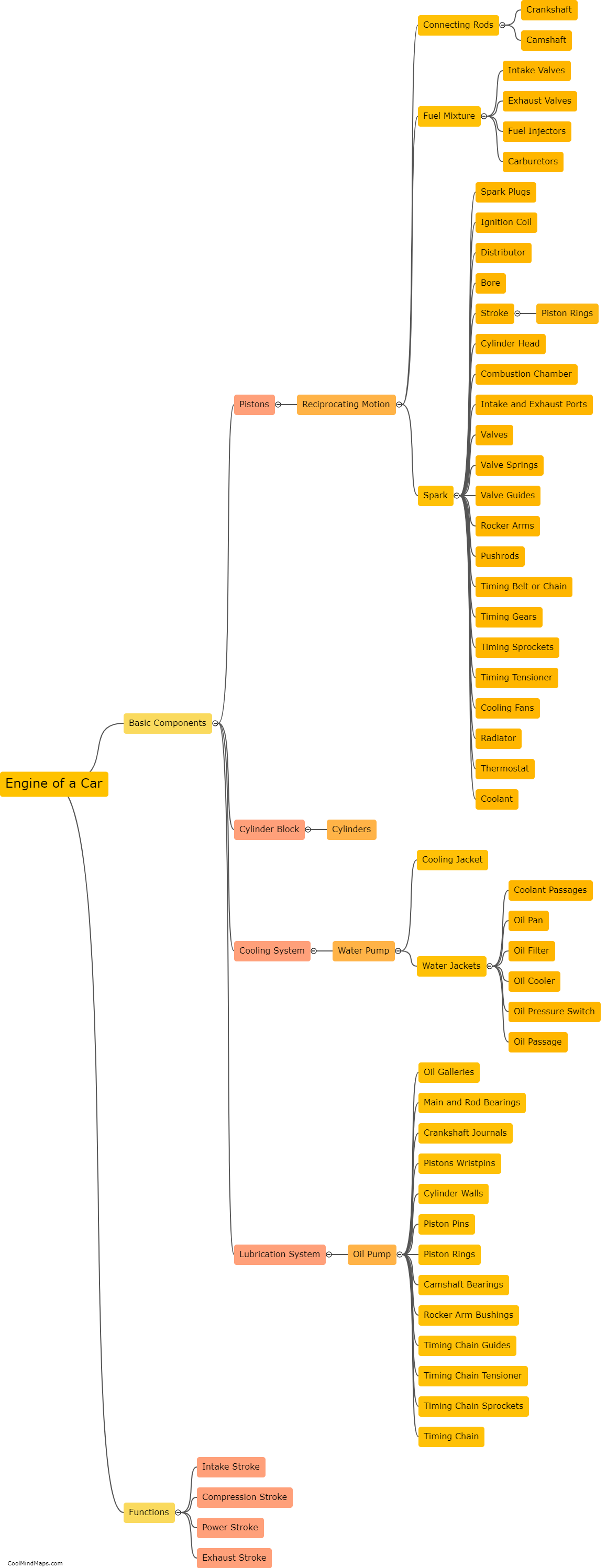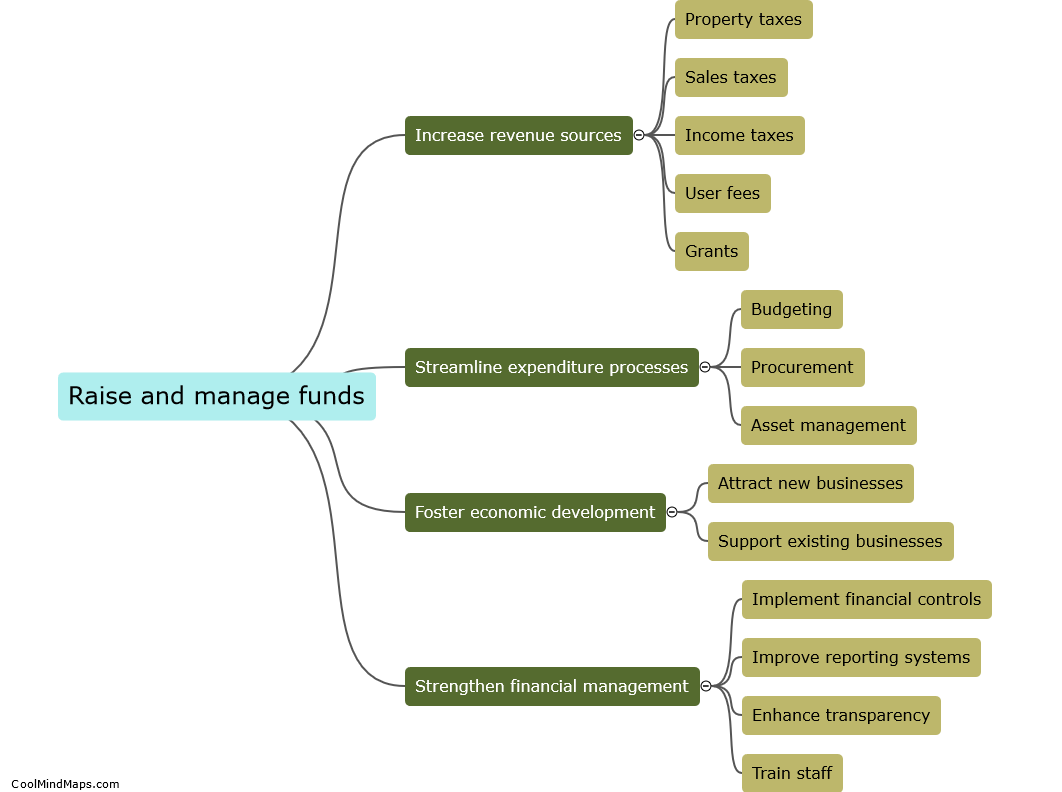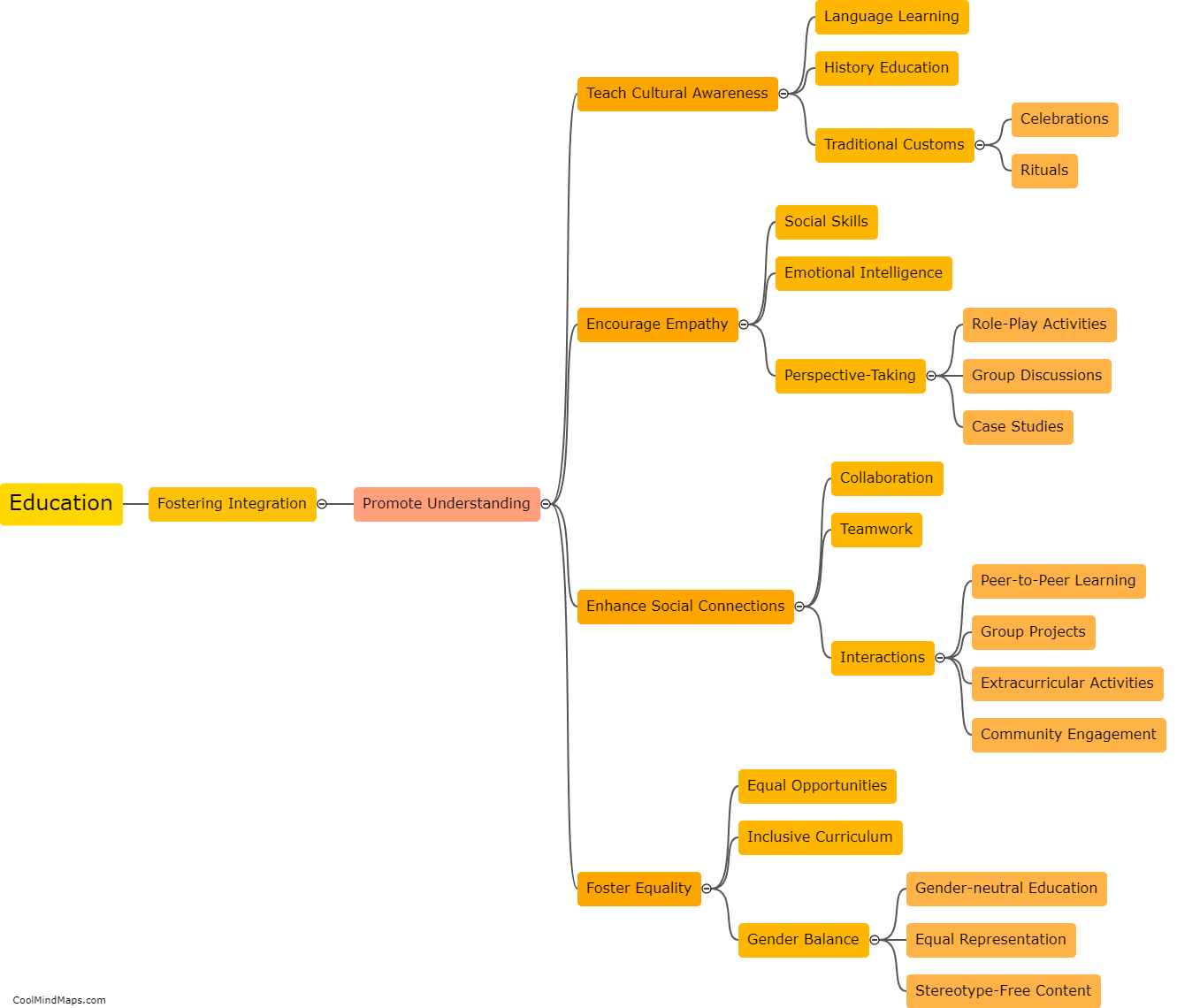How does the engine of a car work?
The engine is the heart of a car, converting fuel into mechanical energy to power the vehicle. It operates on the principle of internal combustion, where a mixture of air and fuel is ignited to produce controlled explosions. This process takes place in the engine's cylinders, which are essentially enclosed chambers where the combustion occurs. When the fuel-air mixture is ignited by a spark plug, it creates a rapid expansion of gases, pushing the piston downwards. This movement is transmitted to the crankshaft, which converts linear motion into rotational motion. The crankshaft is connected to various components, such as the transmission and wheels, through the drivetrain, allowing the car to move. The process is repeated in each cylinder in a coordinated manner, delivering a continuous and powerful drive to the car.

This mind map was published on 30 August 2023 and has been viewed 97 times.











